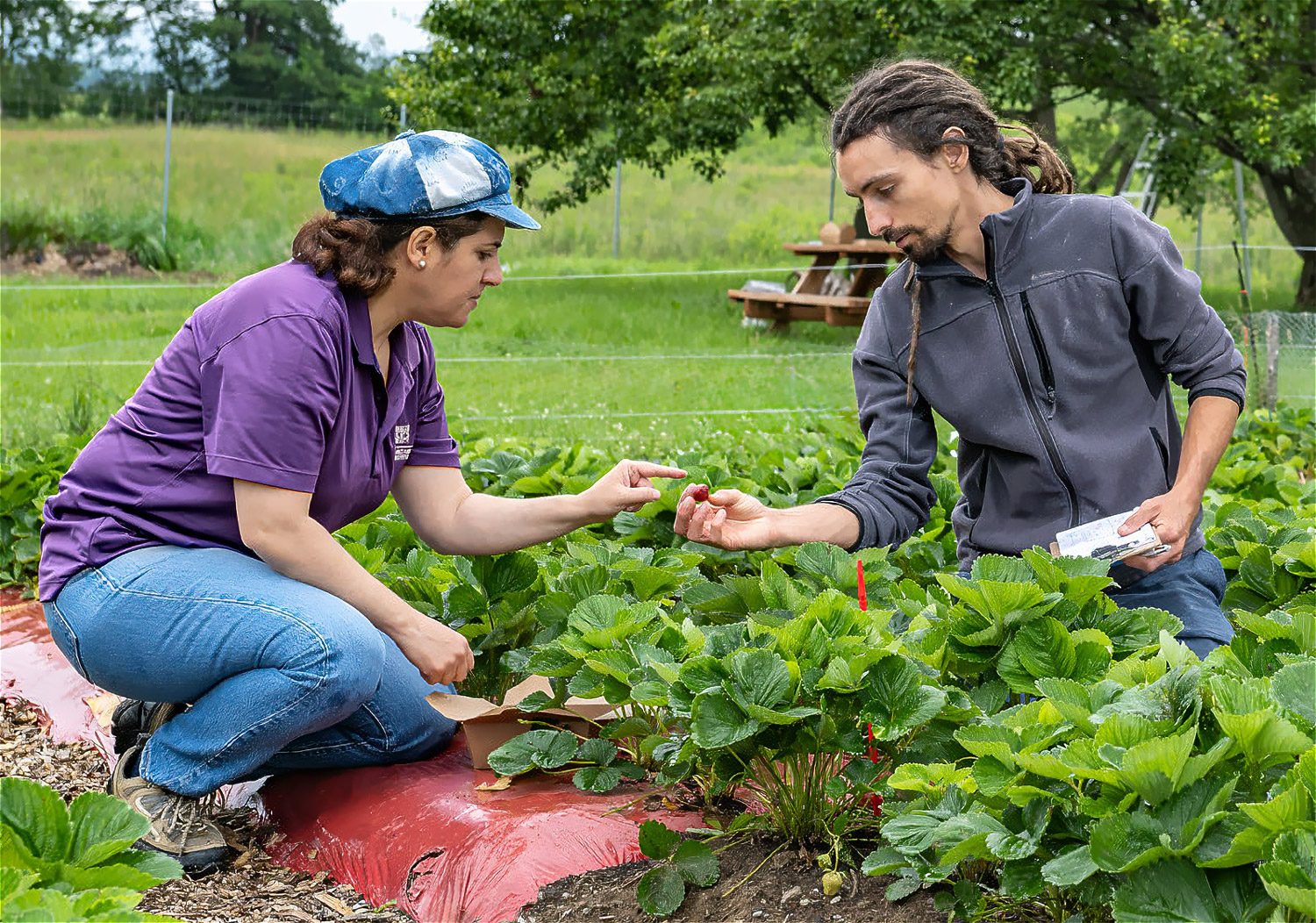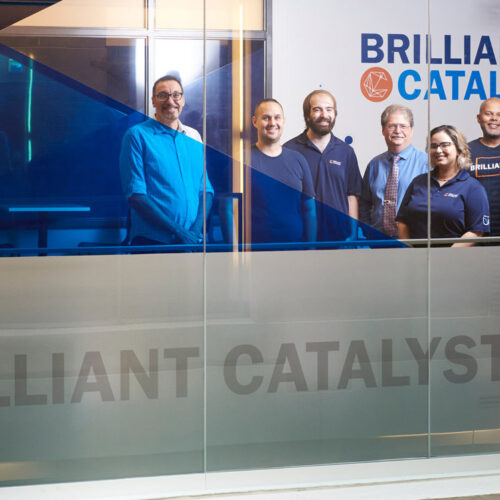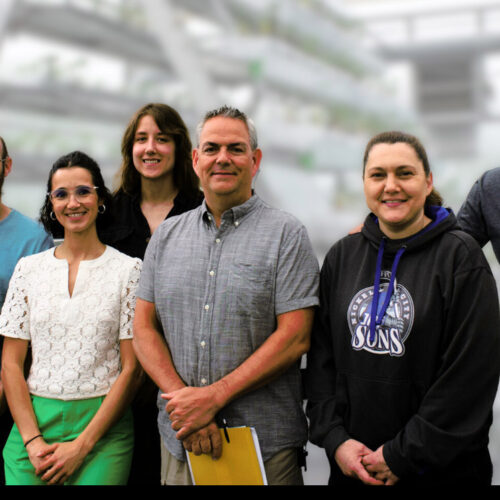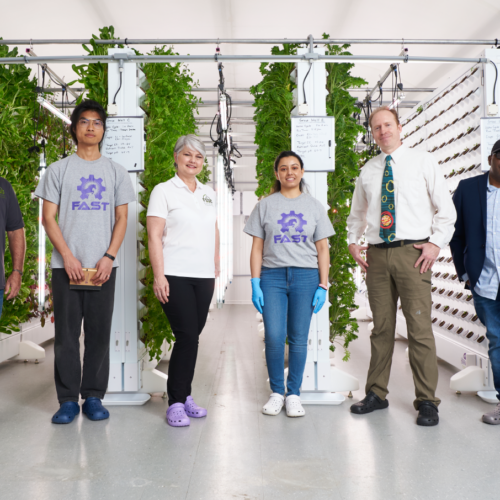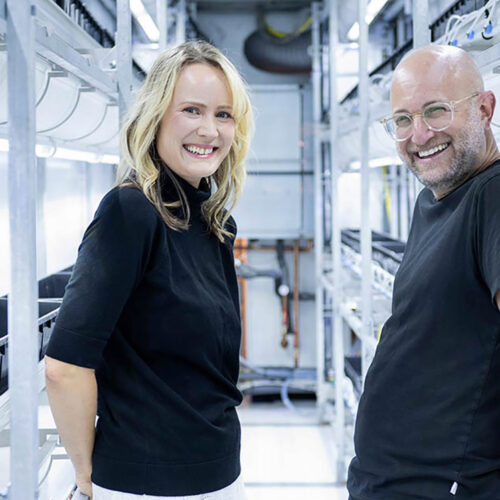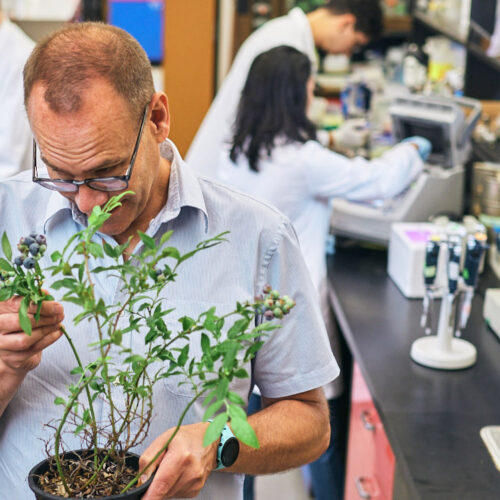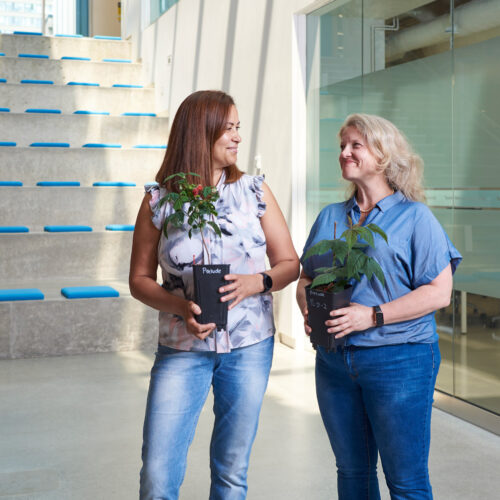Scientists from Bishop’s University and Université de Sherbrooke are aiming to reduce the carbon footprint of fruit production by developing on-site renewable energy. Revolutionary solar-passive greenhouses will address growth media, energy consumption, and water management, in addition to supporting a “flower-on-command” approach.
CANberries: Year-round production of Canadian berries.
While traditional greenhouses may extend the growing season, they can also gobble electricity—energy that is often supplied by fossil fuels.
Scientists from Bishop’s University and Université de Sherbrooke are aiming to reduce the carbon footprint of fruit production by developing on-site renewable energy for local greenhouses. Led by Dr. Mirella Aoun, the team is partnering with Berger, a worldwide leader in the production of first-quality growing media, Les Productions Horticoles Demers, and family-run Quebec-owned agricultural producers Pouliot to grow raspberries all year. “In the future, we could be able to produce organic, out-of-season fruit,” Dr. Aoun says. “This is unheard of for raspberries and greenhouses.”
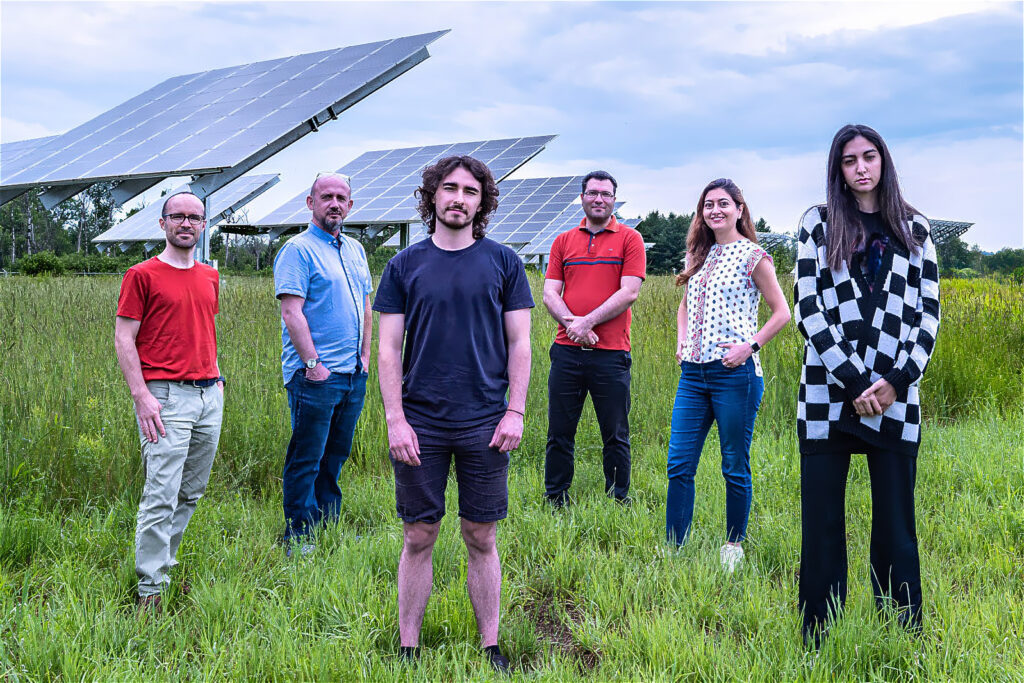
The team’s cutting-edge prototype will undertake multiple cycles of production during the off-season using different varieties of raspberries. “The most important breakthrough would be production in the fall,” Dr. Aoun says. “No one has done this yet because of technological challenges. Namely, the sunlight in the fall is not enough.”
“When we succeed and we have a breakthrough it means that Canadians will have access to locally produced, out-of-season fruit. They won’t have to rely on imports. Consumers will have access to nutritious local produce—grown with the most sustainable process possible.”
The solar-passive CANberries greenhouse design maximizes the use of available natural light and warmth, but what nature can’t provide is supplemented by agrivoltaic-aerogeothermal technologies. Crops are grown while an integrated photovoltaic system contributes to power the greenhouse’s artificial lighting, irrigation, and cooling systems. The panels can be opened to let in natural light or closed to supply shade. “A winter greenhouse can be used on any farm,” Dr. Aoun says. “However, we’re integrating these alternative energy technologies, so that we’re moving toward more sustainability.”
The project’s other resource-sparing methods include rainwater and evaporation collection, and solar-powered water treatment and storage at the Scaling Phase, which expand the circular design properties of the greenhouse. This circularity is a way to keep things as natural and ecological as possible.
The team’s agroeconomist will collect economic data to identify how these sustainable and environmentally-conscious growing practices can be adapted to best support producers, agricultural communities, and entrepreneurs. Success will place Canadians at the forefront of this agricultural technology, creating jobs, and shedding light on the necessity of cross-industry collaboration in the future for students and entrepreneurs. “It’s not yet possible to reach commercial productivity per square metre for raspberries,” Dr. Aoun explains. “We’re finding the best scenario for scaling up, not only at the technological level but also at the economical level.”
Collaborators
- Leyla Amiri, Université de Sherbrooke
- Darren Bardati, Bishop’s University
- Andréane Gravel, Les Productions Horticoles Demers
- Joey Boudreault, Ferme Onésime Pouliot
- Stéphanie Forcier, Association des producteurs de fraises et framboises du Québec (APFFQ)
- Izmir Hernandez, Réseau D’expertise en Innovation Agricole
- Jane Morrison, Bishop’s University
- Sylvain Nicolay, Université de Sherbrooke

